Roti Indian Flatbread (Chapati)
Traditional roti is a staple food in India. This soft and fluffy, yet crisped flatbread is your ticket to a well-rounded authentic Indian meal. It is incredibly easy to make and requires only 4 ingredients. Each freshly made flatbread is covered with melted ghee while still warm to bring out the natural rustic flavors.
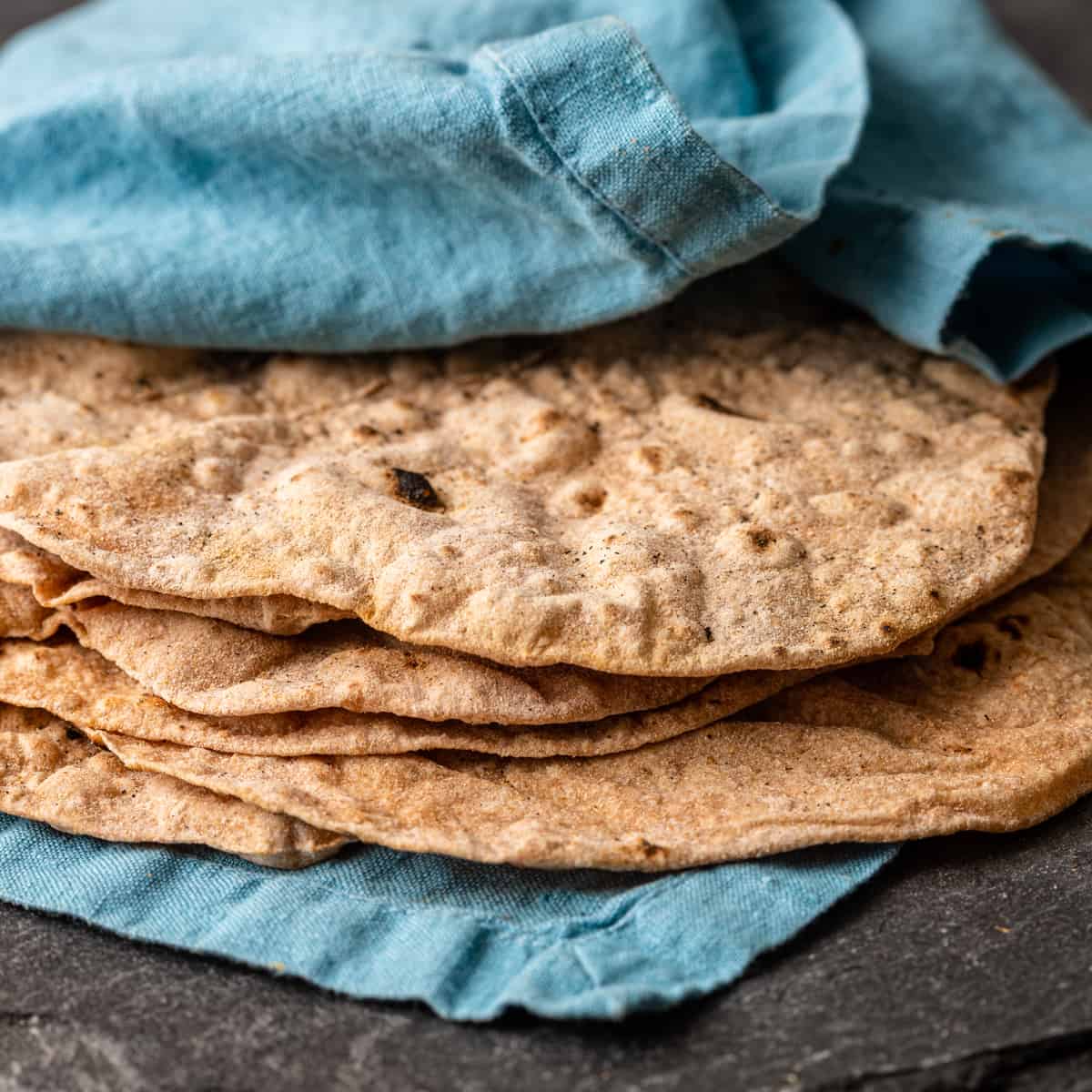
Few foods have stood the test of time as remarkably as bread. Almost every culture under the sun has its own version. There are Moo Shu Pancakes from China, Jewish Challah Bread, Barbari Bread (Persian Flatbread), Taiwanese Steamed Bao Buns, and
Simit (Turkish Sesame Bread) — just to name a few from the Silk Road.
Today’s recipe is a traditional Indian flatbread known as roti or chapati. There is a bit of debate over its exact origins, but most agree it comes from Southern India. This flatbread has been a staple food in the Indus Valley for literally thousands of years, and today, you get to bring that tradition into your kitchen!
A simple, delicious flatbread is the perfect compliment to any Indian cuisine. And if you don’t mind extra bodies in your kitchen, this recipe is a fun one to make with a friend.
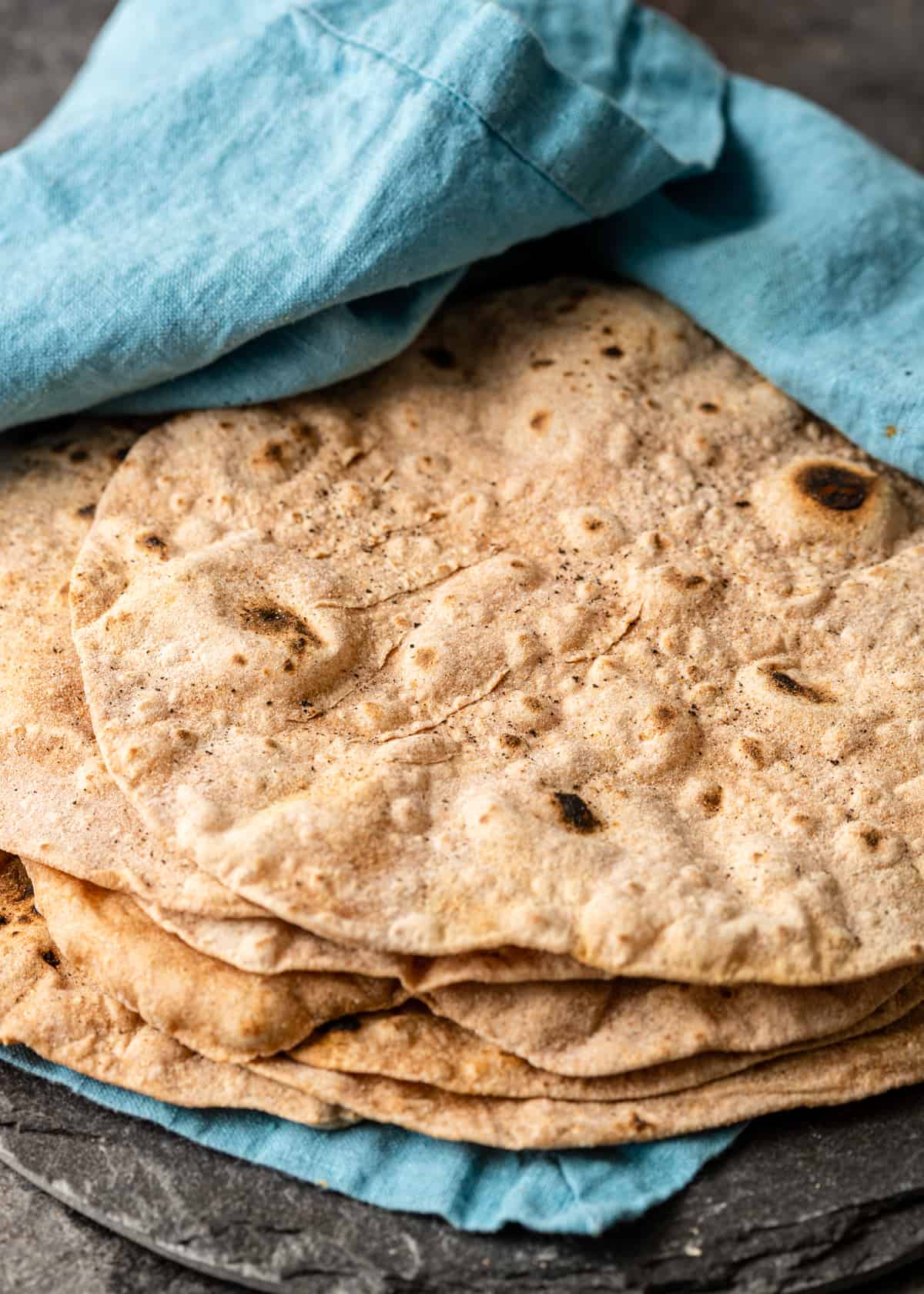
INGREDIENT NOTES AND SUBSTITUTIONS
- Flour – Gives structure to the bread. Choose whole wheat flour or all-purpose flour.
- Salt – Enhances flavor and strengthens the dough.
- Oil – Adds moisture and softness to the dough. Olive oil, melted butter or ghee, or coconut oil are all good options.
- Water – Adds moisture and keeps the dough pliable.
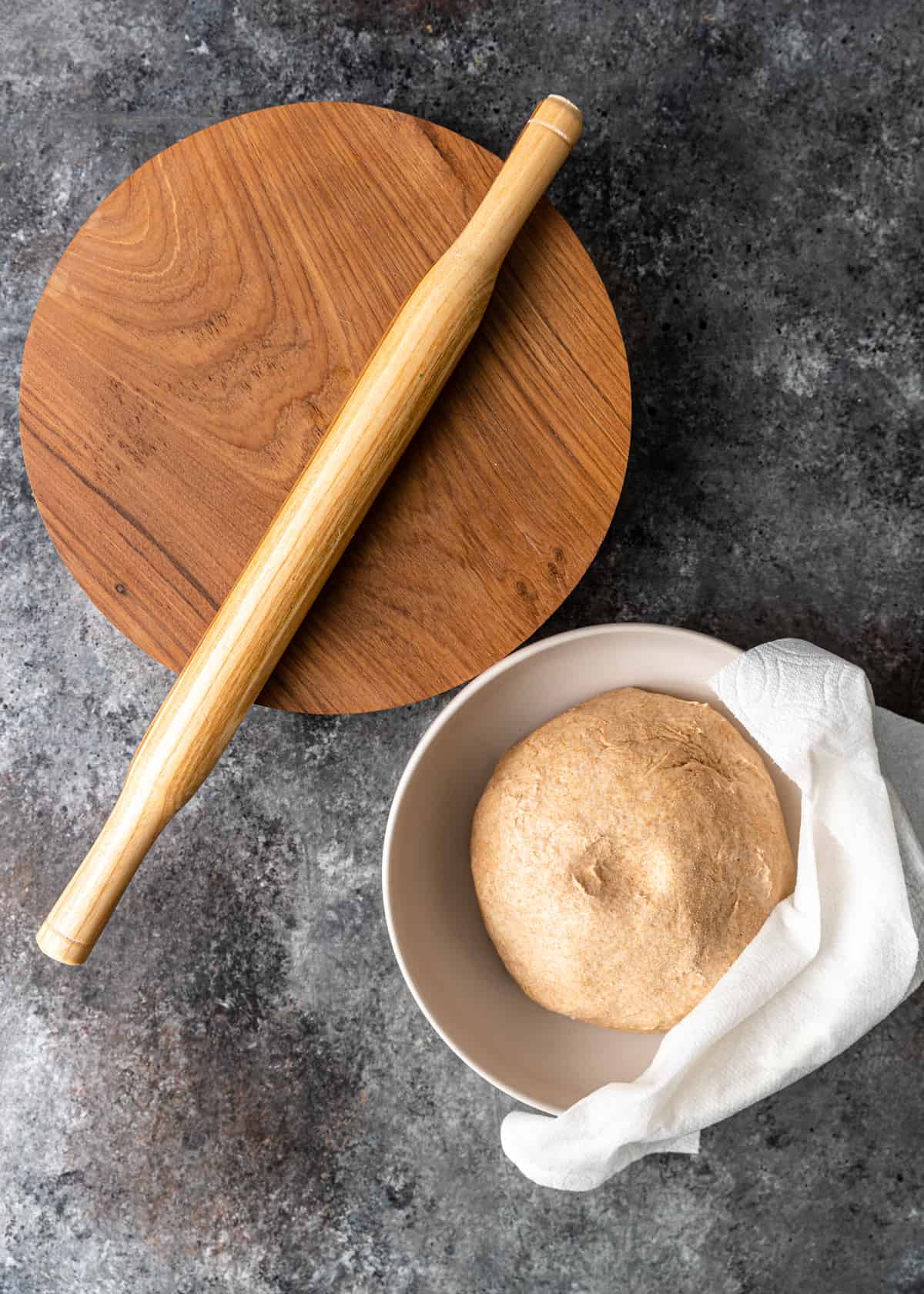
HOW TO MAKE ROTI DOUGH
1. Mix the Dough. Place the whole wheat flour and salt in a bowl and form a well in the center. Add the oil, then slowly add the water, little by little. As you add water, use a mixer and dough hook or your hands to bring the dough together. The amount of water you need will vary depending on the type of flour being used and the humidity present.
2. Knead the Dough. Once the dough has formed, knead it for about 3-5 minutes or until it feels soft and smooth. If your dough is too sticky, incorporate a bit more dry flour and knead again. If it feels hard or dry, add a bit of water and knead.
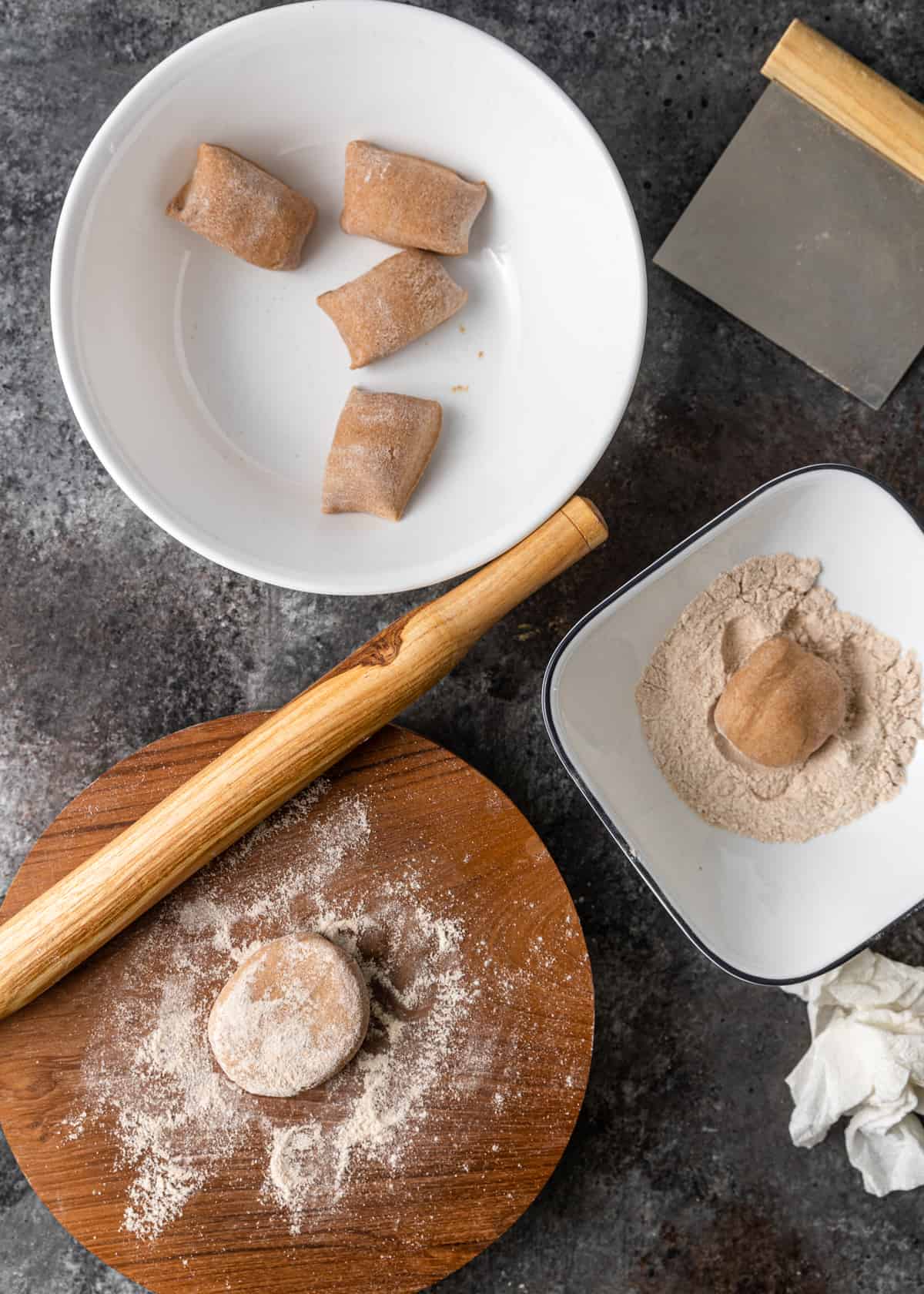
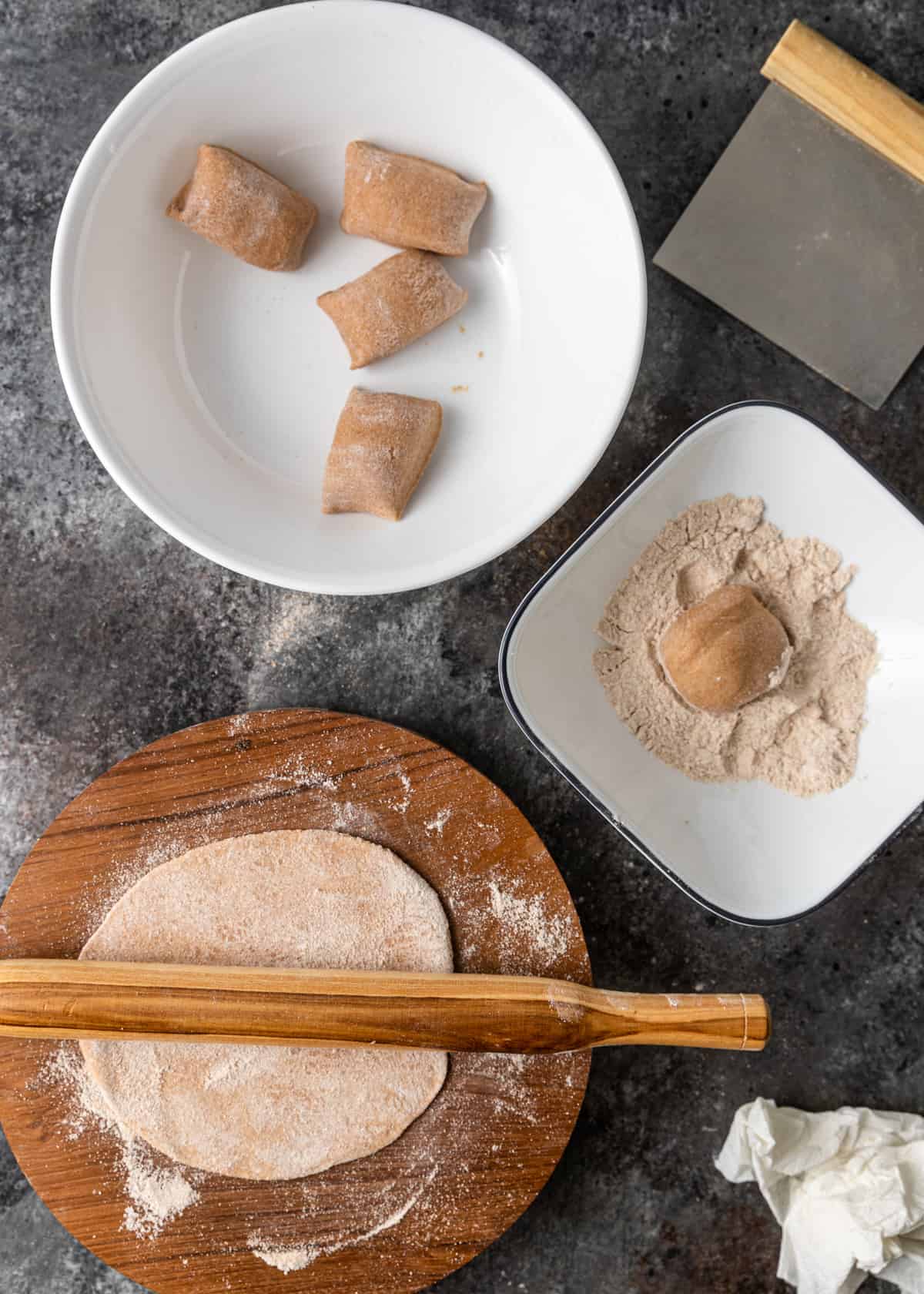
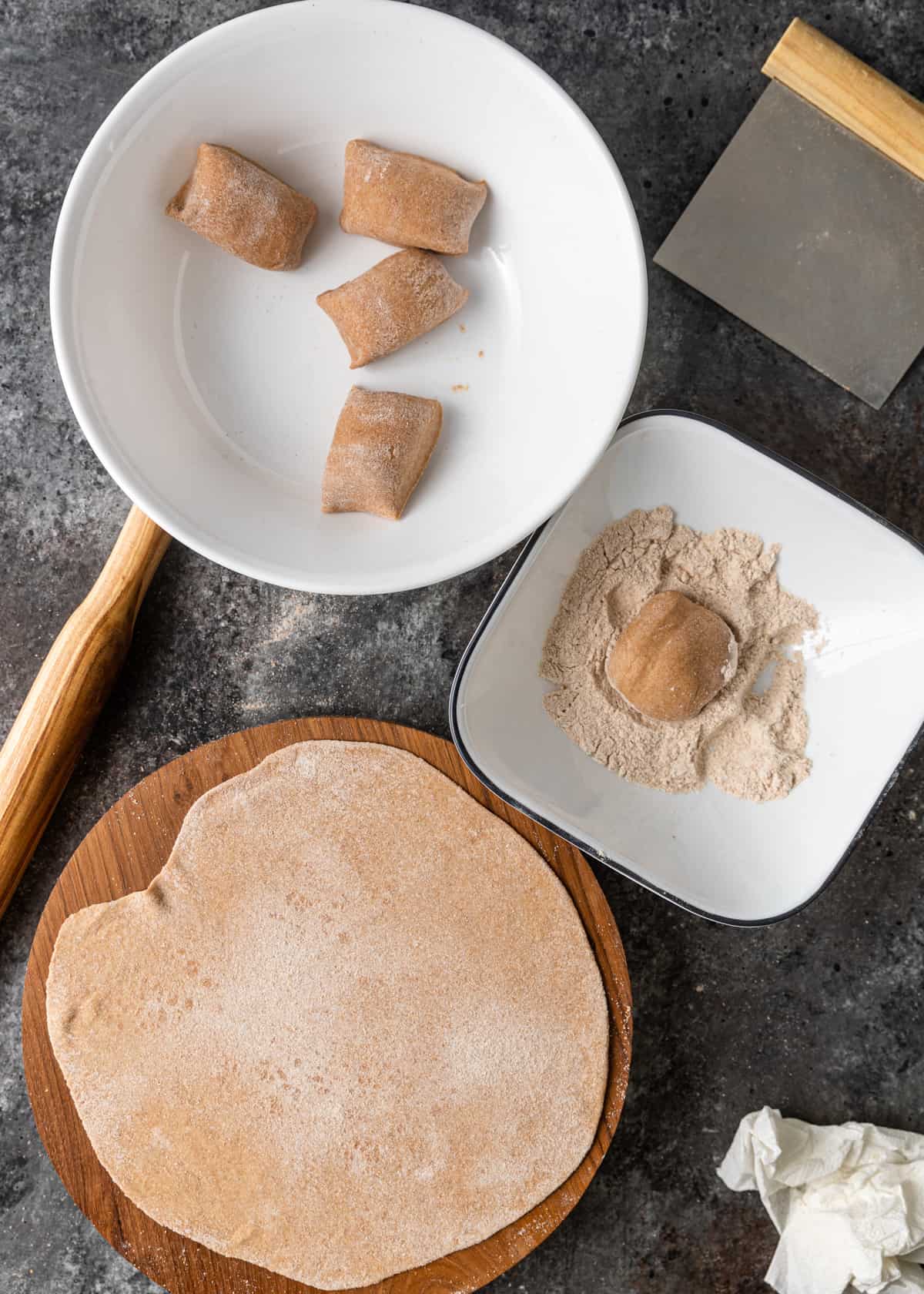
3. Cover and Rest. Form the kneaded dough into a ball and press your thumb into it to ensure it leaves an impression. Then, cover the dough ball with a damp cloth or paper towel and set aside to rest for 20 minutes.
4. Separate. Add ¼ cup of whole wheat flour to a small bowl and set close by. Roll your dough ball into a 12 inch tube before dividing it into 12 equal pieces.
5. Flatten. Take one piece of dough, leaving the remainder covered to avoid drying. Press on the dough to flatten it slightly into a disc. Quickly dip it into the dry flour, lightly dusting each side.
6. Roll Thin. Lightly dust a clean surface with flour and use a rolling pin to flatten each chapati into a 5 to 6 inch diameter disc. Apply flour as needed to each side to avoid sticking.
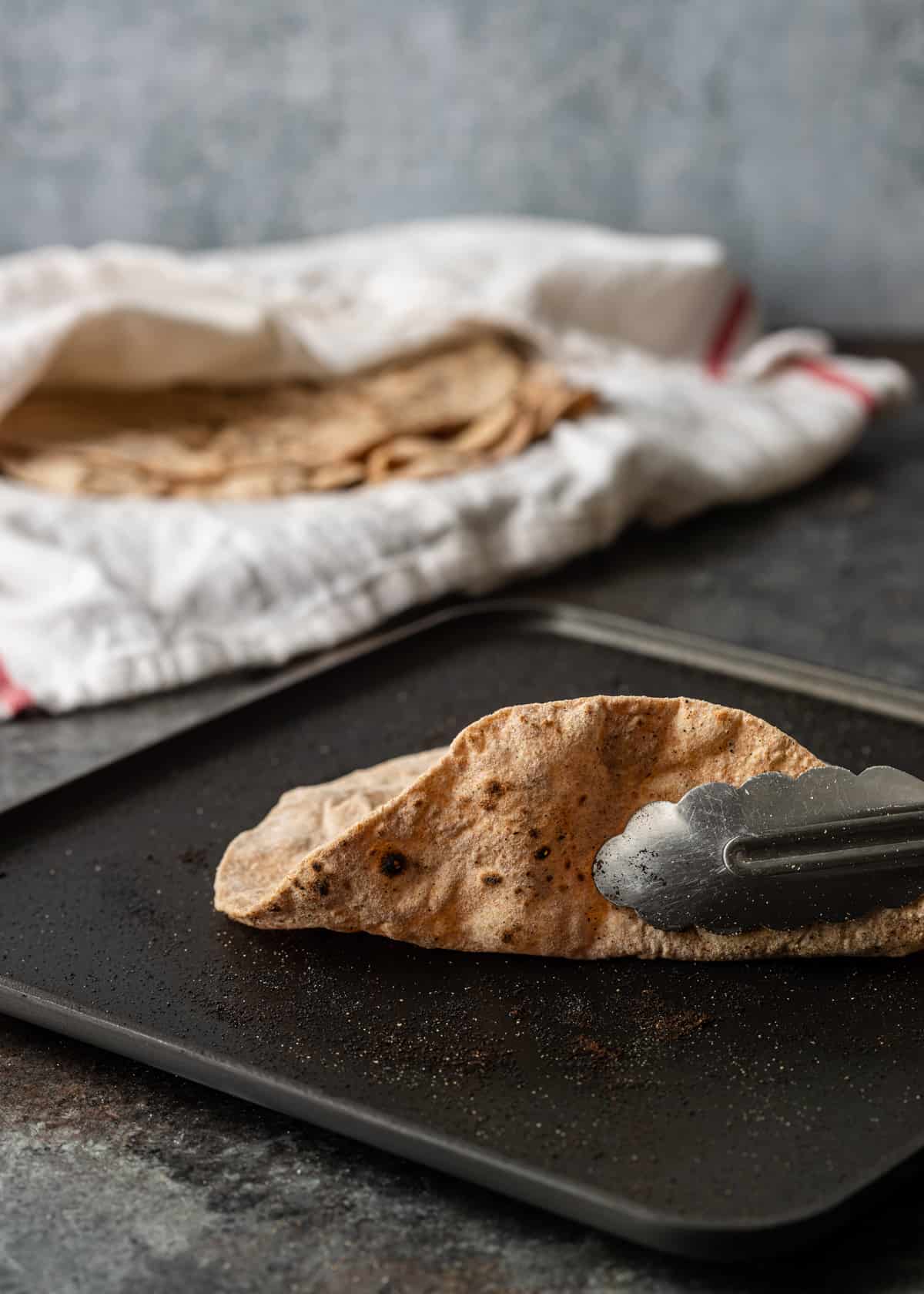
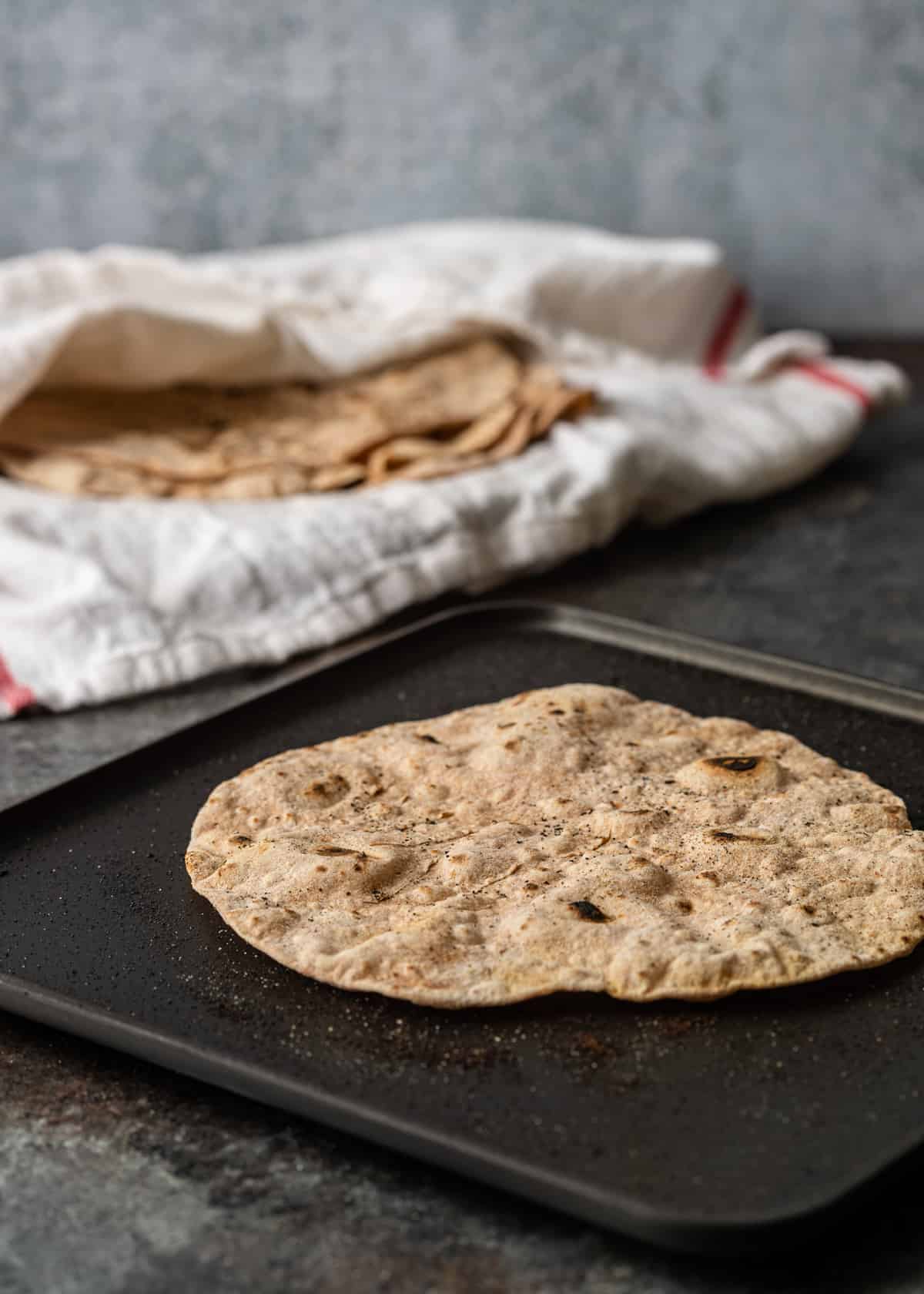
HOW TO COOK INDIAN FLATBREAD
- Prepare Skillet. Heat a large skillet over medium high heat. Gently flip each dough disc back and forth to remove excess flour before adding to the skillet.
- Cook. Place each one in the skillet and allow it to cook for 15-30 seconds on one side, or until bubbles begin forming on the top. Flip and cook for an additional 30 seconds or until brown spots are visible on the underside.
- Hold Over Flame. Use tongs to remove each flatbread from the skillet and place the first cooked side directly over an open flame. If the dough has been evenly rolled and is free of holes, your roti should puff up like a balloon. Once it has, use the tong to flip it and very briefly cook the other side. If you don’t have an open flame, you can gently press down with a kitchen towel or cloth along the sides and they will start to puff up on the skillet.
- Apply Ghee. Transfer each flatbread to a warm plate and immediately apply ghee. Use a towel to cover the plate and keep your chapati warm while repeating the process for the remaining dough.
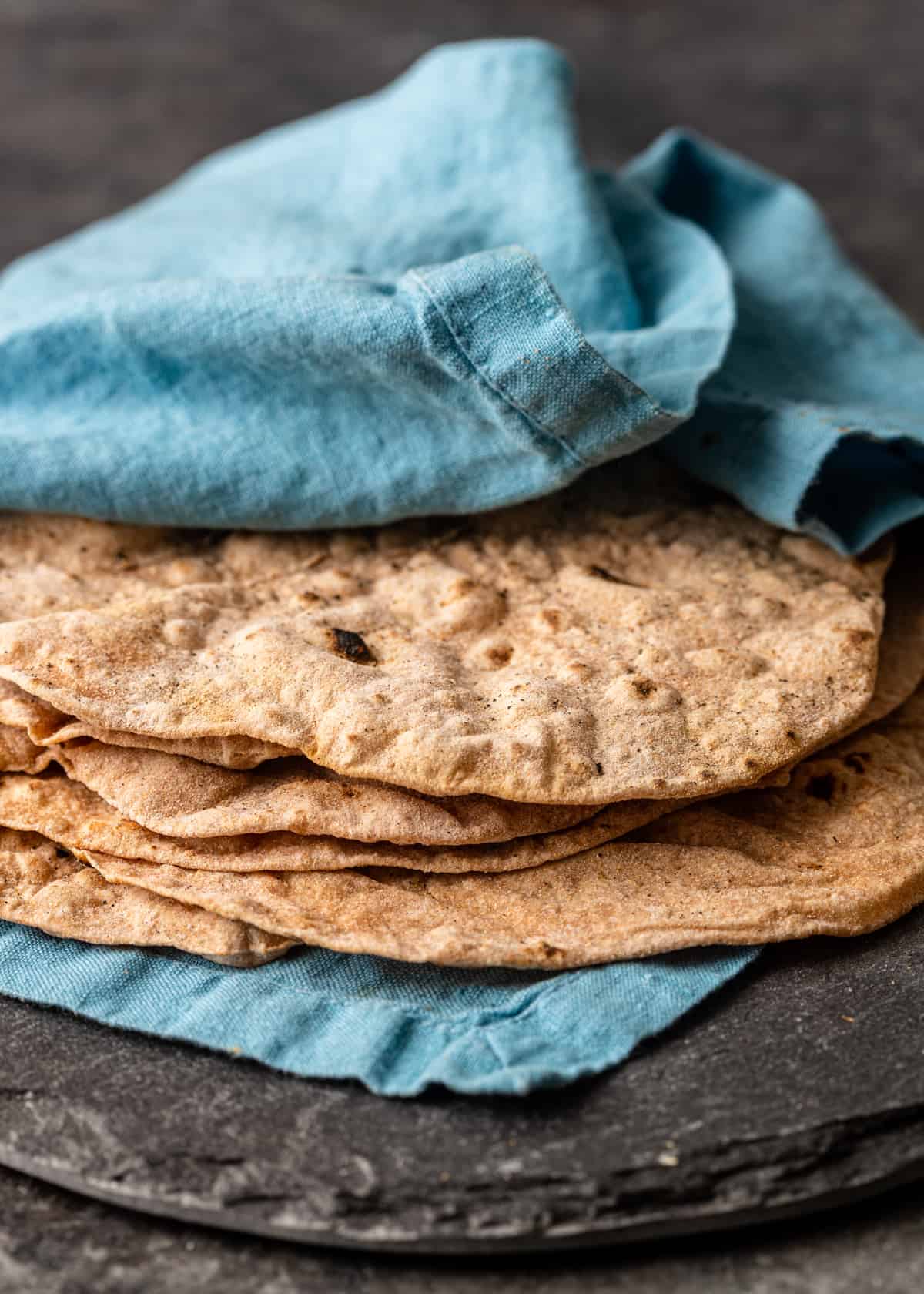
Is Roti the Same as Naan?
Both are traditional Indian flatbreads with a few key differences. Roti is unleavened and has a lighter texture. It is also traditionally cooked in a flat skillet.
Naan, on the other hand, is leavened which gives it a thicker, denser texture. It is traditionally cooked in a tandoor oven and can come with a variety of flavors or toppings.
How is Roti Traditionally Served?
You can enjoy this versatile flatbread with just about any type of food. In India, roti is most commonly enjoyed with curries, cooked vegetables, and meats. The flatbread is usually torn and used to soak up sauces or as a carrier for whatever dish you are enjoying.
I recommend trying this recipe alongside my Indian Chicken Curry (Murgh Kari), Lamb Vindaloo Curry, or Kala Chana (Black Chickpea Curry).
How Do I Store Leftover Chapati?
Separate Indian flatbread with wax paper, wrap in aluminum foil, and place in an airtight container. Your chapati will last in the refrigerator for 2-3 days or in the freezer for 2-3 months.
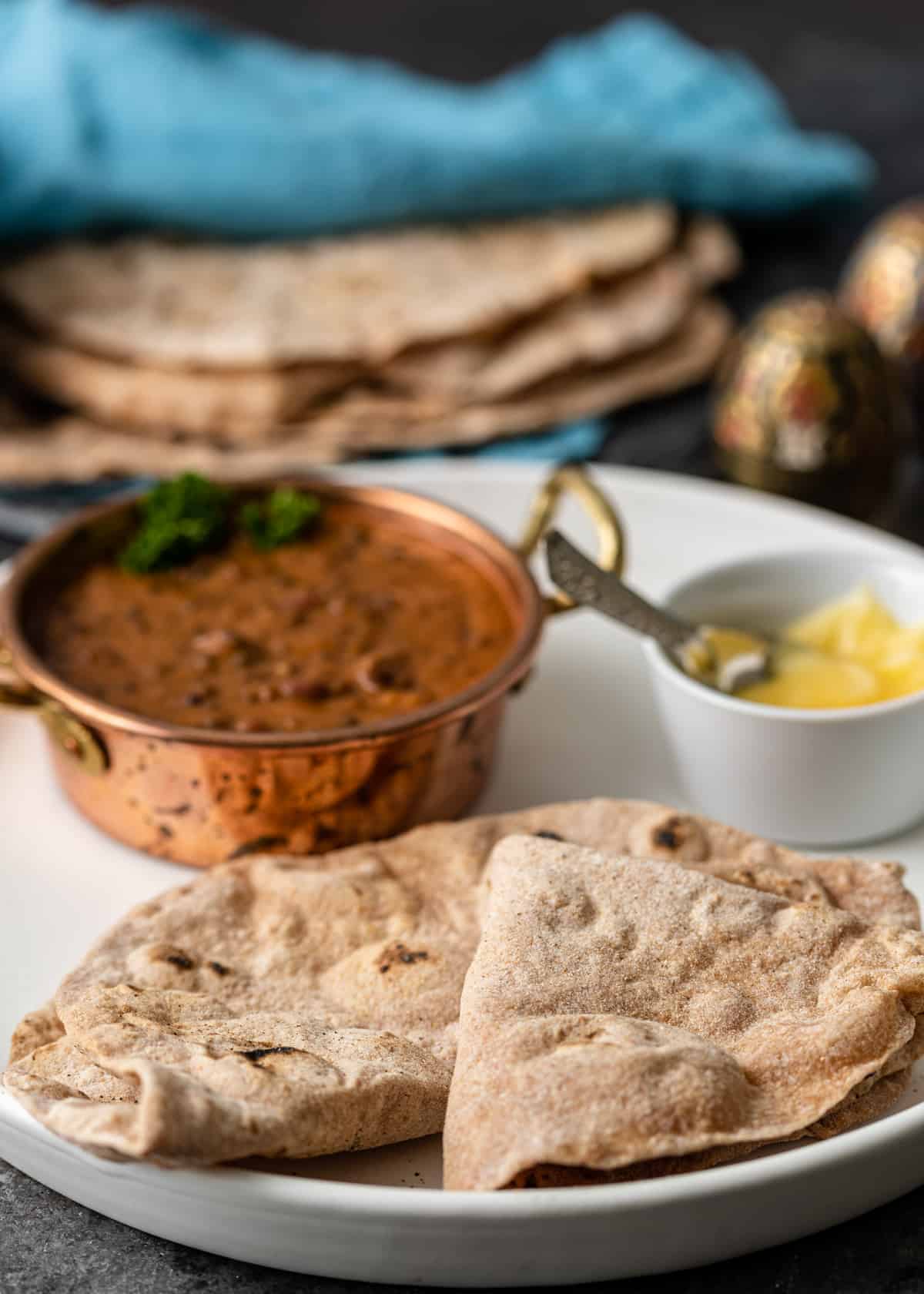
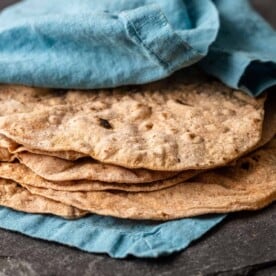
Roti Indian Flatbread (Chapati)
Ingredients
- 2 1/3 cups whole wheat flour plus 1/4 cup when rolling the roti
- 1/2 teaspoon salt
- 1 teaspoon vegetable oil
- 3/4 cup water
Instructions
- In a bowl add the whole wheat flour, salt and make a well in the center. Add the oil and start adding water, little by little. As you add water, mix with your hands and bring the dough together or use with mixer and dough hook. You may need more or less water depending on the type of flour and humidity.
- Once the dough comes together, start kneading for 3-5 minutes or until the dough feels soft and smooth (if it feels hard, add little water and knead again. If it feels too sticky and or soft, add some dry flour and mix). Form into a ball and press the dough with your thumb, it should leave an impression. Cover the dough with a damp cloth or paper towel to rest for 20 minutes.
- Place 1/4 cup whole wheat flour in small bowl, set aside. Roll the dough into a 12 inch tube. Divide the dough into 12 equal parts.
- Start working with one piece of dough while keep the remaining dough covered with a damp cloth to avoid drying out. Press the dough and flatten it slightly into a disc. Dip the dough into the dry flour, dusting it on both sides.
- Start rolling the roti on a clean surface dusted with flour using a rolling pin. Roll it thin until you have a 5 to 6 inch diameter roti. Sprinkle the roti with dry flour several times while rolling the roti to avoid any sticking.
- Heat a skillet on medium-high heat.
- Flip the roti back and forth in your hands to dust excess flour off and place it on the hot skillet.
- Let it cook for 15-30 seconds until you see some bubbles on top side. Flip the roti and cook the other side for around 30 seconds more, or until you look and see brown spots all over on underside.
- Now, remove the roti from the skillet using tongs and place it on the first side, directly on an open flame. The roti, if rolled evenly and has no minor holes in it, will puff up like a balloon. Flip it with tongs to cook the other side as well, very briefly. If you don't have an open flame, you can gently press down with a kitchen towel or cloth along the sides and they will start to puff up on the skillet.
- Transfer to a plate with a towel to cover and apply ghee to each rotis immediately. Make remaining roti and serve warm.
Video
Nutrition
The information shown is an estimate provided by an online nutrition calculator. It should not be considered a substitute for a professional nutritionist’s advice.
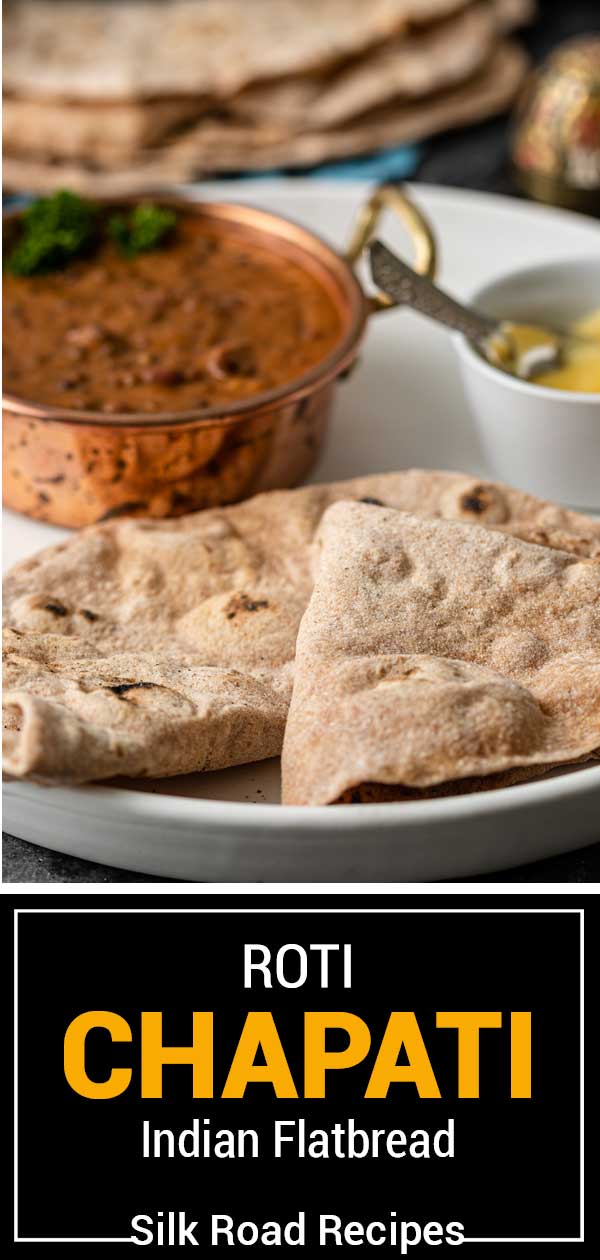
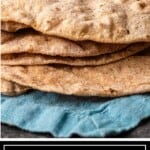
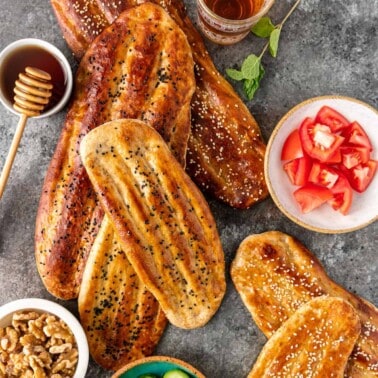
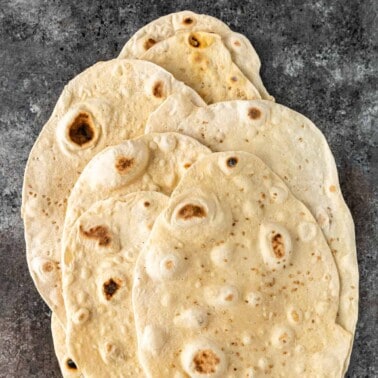
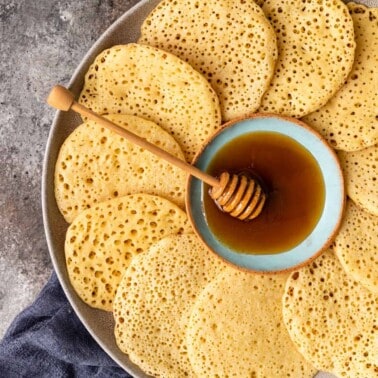
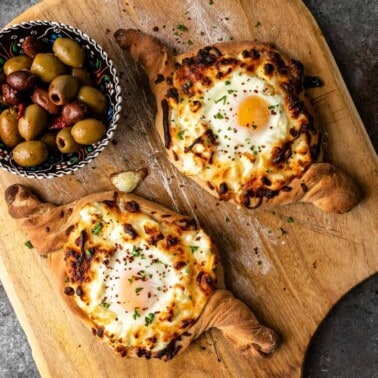








These were so easy and the family enjoyed these. I was afraid to place it over an open flame, but my son did and it was so fun to watch them puff up (I did it on the skillet)! Thanks Kevin.
Yay! So glad you tried these and that your son gave the open flame a try. It’s so easy. 🙂
Made these to serve alongside your Dal Makhani instead of your naan bread. These are just as tender and perfect for scooping. Highly recommend these!
Really appreciate the feedback and for coming back to let me know Sharon!
Cant wait to make this soon for me am indian and i approved this perfect for my after office meals lobe your recipes as always brightens up my day everyday after work